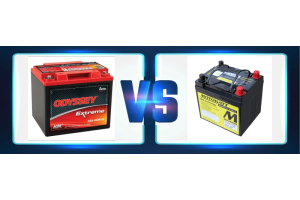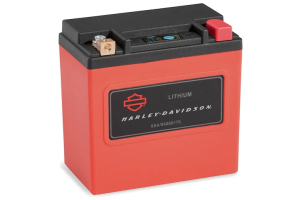Gel Lead-Acid Batteries Vs. Other Sealed Batteries
The most common type of battery for vehicles and heavy machinery is the lead-acid battery, but within this broad category are several specific types. The most commonly used type of lead-acid battery is the flooded, or wet-cell, battery. Other types of lead-acid batteries include the gel battery and the absorbed glass mat (AGM) battery. While gel and AGM batteries are always sealed, wet-cell batteries come in both sealed and unsealed versions. All three types of these sealed batteries have some important differences that can play a role in deciding which one to purchase.
Lead-Acid Battery Basics
To gain a complete understanding of the differences between sealed lead-acid batteries, it is first necessary to understand the similarities. Each battery is composed of several cells, and inside each cell are two metal plates. The positive plates are made of pure lead while the negative plates are lead oxide. These plates are submerged in a solution that is approximately 33.5% sulfuric acid. Electricity is discharged when electrons move from the negative plate to the positive plate through the acid solution.
Wet-Cell Battery
Although the technology for wet-cell batteries is the oldest of the three types of sealed batteries, they are still the most commonly used. Most wet-cell batteries are unsealed. These are known as serviceable batteries and require that the liquid electrolyte solution is refilled from time to time through removable cell caps. The other type of wet-cell battery is a sealed, or maintenance-free, battery. Wet-cell batteries are the least expensive, but they carry the most risk. The chemical reactions that occur while charging and discharging create hydrogen gas that can cause an explosion if the battery is not cared for properly. In addition, wet-cell batteries are prone to corrosion.
AGM Battery
[caption id="attachment_1635" align="alignright" width="150"] AGM Lead-Acid Battery[/caption]
AGM Lead-Acid Battery[/caption]
Many people consider AGM batteries to be the most sophisticated type of sealed batteries available today. These batteries hold the electrolytes close to the plates with fiberglass separators or wrappers. The fiberglass absorbs the electrolytes much like a towel does with water. This proofs the battery from spills should the case be compromised. These batteries are also packed very tightly, which protects them from accidental damage. Although these batteries are safer than wet-cell batteries, the primary purpose of their construction is to reduce internal resistance. The lower resistance increases the maximum volts while reducing losses from heat. In addition, AGM batteries charge much faster than wet-cell batteries do.
Gel Battery
The gel battery combines some of the characteristics of the wet-cell battery with those of the AGM battery. A special type of silica is mixed with the electrolyte solution in this type of battery, which changes its state from a liquid to a gel. The electrolyte gel is packed relatively tightly, and it clings to the plates, reducing the resistance experienced with a free-flowing liquid. A gel battery is more durable than a wet-cell battery, but this durability does not compare to that of an AGM battery. In addition, gel batteries cannot be used in high-amperage situations. If the amps get too high, the gel can become scarred, which creates gaps or pockets within the cell. This can lead to plate corrosion and reduce the life of the battery.





